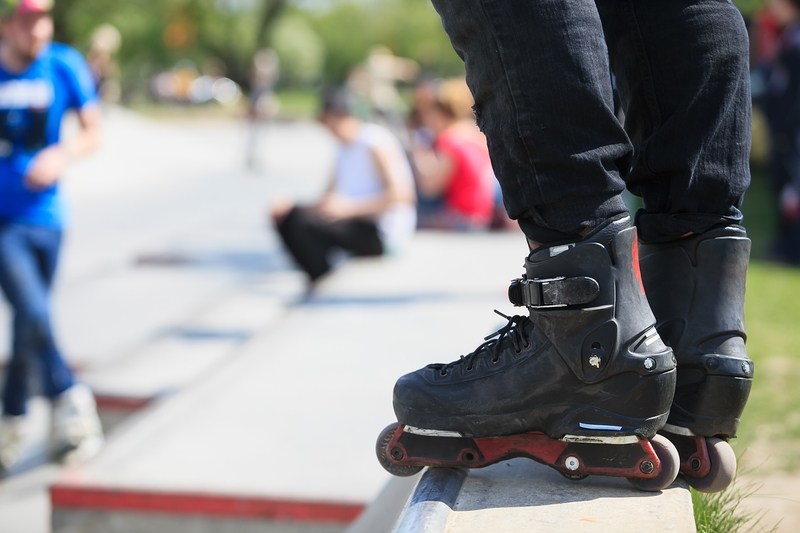How to Label and Organize Bed Parts for a Stress-Free Move
Moving homes can be a daunting process, especially when it comes to disassembling and reassembling larger furniture pieces like beds. One of the most stressful aspects of a move is losing small hardware or forgetting which piece goes where. Learning how to label and organize bed parts efficiently is essential for ensuring your move is anxiety-free and your bed is quickly ready for a restful night. This guide offers comprehensive tips and differentiated strategies on how to keep bed frame parts and hardware secure, organized, and easily identifiable.
The Importance of Properly Organizing Bed Components When Relocating
Beds are an essential part of your living space and can sometimes be one of the furniture items that takes the longest to set up after a move. Misplaced screws, lost slats, or unidentified bed rails can make reassembly challenging, leaving you exhausted after a long moving day. Labelling and organizing bed parts not only saves time but also reduces frustration, minimizes the risk of losing important components, and ensures the safety and stability of your bed after reassembly.
- Prevents parts from getting lost
- Speeds up the reassembly process
- Reduces the risk of incorrect installation
- Makes it easier for anyone helping you to assemble the bed

Gathering Essential Supplies for Organizing Bed Parts
Before you begin dismantling your bed, ensure you have the right tools and materials for both disassembly and effective labeling. Doing so will make the process more systematic and less chaotic.
Checklist of Supplies
- Permanent markers or colored pens
- Masking tape, painter's tape, or labeling stickers
- Zip-lock bags or small plastic containers for hardware
- Resealable bags for small parts and screws
- Bubble wrap or cushioned material for fragile elements
- Notebook or digital device to record bed configurations or part positions
- Camera or smartphone for taking reference photos
Having these items on hand ensures that when you start disassembling your bed, you are prepared to track every single component with clarity and precision.
Step-by-Step Guide to Dismantling and Labelling Bed Parts
Efficient labeling of bed parts can be broken down into a series of logical steps. Let's explore how you can disassemble, label, and organize bed parts for moving seamlessly.
1. Take Reference Photographs
Before you start taking apart your bed, grab your phone or camera and snap detailed photos from every angle. Focus on:
- *Headboard, footboard, and side rails attachment points*
- *Slats or platform placements*
- *Close-ups of hardware connections*
These images will serve as a road map for reassembly, clarifying precisely how pieces fit together--especially if your bed frame is intricate or custom.
2. Disassemble Methodically
Take your time and disassemble one section at a time. Start with the mattress and bedding, then proceed to the frame, slats, and other structural parts. Keep all hardware (screws, bolts, washers, nuts) for each section grouped together.
3. Label Each Bed Part Clearly
Labelling bed parts is crucial. Use masking tape or removable labels and adhere them to each component. Write clear descriptions such as "headboard left leg," "right side rail," or "slat set A." For wooden parts, attach labels to non-visible surfaces to avoid leaving sticky residue on prominent areas.
If your bed frame has unique fasteners or hardware, label those as well. For example: "headboard-to-rail bolts," "center beam screws," etc. Consistency and clarity are key here!
4. Organize and Store Hardware
All hardware should be placed in individual zip-lock bags or small containers, labeled accordingly. Avoid mixing screws and bolts from different parts! Consider using a marker to note which part the hardware belongs to on the bag itself (e.g., "side rail bolts").
For extra security, double bag these items and attach the bag to the corresponding bed part using masking tape or string. Alternatively, keep all the labeled bags together in a clearly marked box labeled "Bed Frame Hardware."
5. Create a Bed Assembly Inventory List
As you go, make a written list--in a notebook or on your phone--noting every part and the associated hardware. Number or color-code the parts, and record these details in your list so you can cross-reference during reassembly.
Advanced Tips for Organizing Bed Frame Parts Efficiently
Sometimes, a simple label isn't enough, especially if you own a large or complex bed system. Here are advanced strategies for organizing bed frame parts for moving so that nothing goes missing or is misidentified.
Color-Coding Your Bed Parts
For beds with multiple similar components (like numerous slats or multiple side rails), employ a color-coding system. Use colored labels or sticky dots so that each group of parts is easily distinguishable at a glance.
Numbering or Lettering Components
Match each part with a number or letter, and ensure the corresponding label is on both the part and its hardware bag. For instance, parts labeled A1, A2 (side rails), and hardware bags labeled for A1 and A2.
Using a Dedicated Parts Box
Instead of taping hardware to the bed frame, you might choose to use a dedicated "Bed Components Box." This centralizes all parts and prevents them from getting lost in the chaos of moving day.
Digitally Back Up Your Bed Inventory
Snap pictures of every labeled bag and part, then save these along with your written inventory on your smartphone or cloud storage. This adds an extra layer of security if your physical notes go missing.
Bed Parts Labelling Best Practices for a Smooth Move
- Always double-check your labels before boxing up parts.
- Use easy-to-read handwriting or printed stickers.
- Include your name and room destination if you are using professional movers.
- Don't rush; precision saves lots of time on arrival.
- If possible, keep the assembly manual or instruction booklet with your bed parts.
Common Mistakes to Avoid When Organizing Bed Parts for Moving
Even with the best intentions, mistakes happen. Here are some of the most frequent errors people make--and how you can sidestep them for a stress-free bed reassembly:
- Not taking photographs before disassembly - Visual references are often more informative than written ones.
- Using poor-quality labels - Cheap tape or paper tags fall off or smudge. Invest in good labeling materials!
- Mixing up hardware - Combining all screws and bolts into a single bag can be disastrous. Always separate hardware by section.
- Forgetting to back up your list digitally - Physical notes get lost. Take a photo or upload to the cloud as a backup.
- Not securing bags and small parts - Loose bags can get lost in transit. Tape them securely or tuck them into a single box.
How to Unpack and Reassemble Your Bed Parts with Ease
The benefits of careful labelling and organization become apparent when it's time to unpack and set up your bed in your new home. Here's how to use your organization system to reassemble your bed stress-free:
- Gather all labeled parts and hardware - Refer to your inventory and unpack your labeled bags, ensuring nothing is missing.
- Consult your reference photos - Review any visual documentation to clarify the bed's assembly pattern.
- Lay out all parts by group - Match the labels on each part with your notes for easy identification.
- Start assembly step by step - Work methodically, following your list, and use the correct hardware for each bed section.
- Double-check for stability - Once assembled, check that all fasteners are tight and the bed is sturdy.
If you run into issues, your photos and labels serve as a priceless resource. If instructions are lost, you can still figure things out thanks to systematic organization.
Special Considerations for Different Types of Bed Frames
Platform Beds
Platform beds often come with a unique arrangement of slats and center supports. Be sure to label slats by number or group (e.g., "front slat," "middle slat set"). Keep all specialty screws or connectors in separate, marked pouches.
Bunk Beds
Bunk beds have many components that can be difficult to differentiate, especially if you have more than one. Use large, bold labels and consider grouping hardware for each bunk in separate bags.
Antique or Custom Beds
Older or custom-made beds might not have standardized parts. Label each unique piece, and take extra notes about assembly orientation. If you're wary, mark the area each screw comes from, since sizes may subtly vary.
Adjustable Beds
Keep motorized sections and electrical parts separately isolated and well-cushioned. Label all wires and mark their points of connection with colored tape or zip ties for simple reinstallation.
Making Bed Part Organization Kid- or Helper-Friendly
If you have family or hired help, involve them in the organization process! Assign roles: one person can be the official note-taker, another labels parts, and a third photographs everything. Share your digital inventory with helpers so everyone can assist with reassembly at your new home.
When to Seek Professional Help with Bed Disassembly
Some bed frames, especially king-size or custom beds, may require specialised tools or expertise to disassemble and reassemble safely. If you're unsure about handling:
- Heavy frames or ornate wooden beds
- Beds with complicated storage compartments
- Adjustable bases with electronic components
Consider contacting your moving company or a furniture assembly professional. Many moving services include disassembly/reassembly as an add-on, and following the organizational tips above will still help them complete the process quickly and accurately.

Frequently Asked Questions About Organizing Bed Parts for Moving
What are the best labels for bed frame parts?
Use heavy-duty masking tape, painter's tape, or commercial removable label stickers. Avoid ordinary sticky notes--they can detach in transit.
How do I avoid losing bed hardware?
Always keep all nuts, bolts, and washers in a securely zipped bag, ideally attached to a main bed component or stored in a dedicated hardware box marked "Bed Hardware."
Should I keep the bed assembly instructions?
Absolutely. Include the manual with your organized bed parts. If the manual is lost, download a digital version from the bed manufacturer's website.
Can I label furniture parts for long-term storage?
Yes! Use archival-safe labels and back up your inventory digitally for reference when you need to retrieve and reassemble furniture after extended storage.
Conclusion: Label and Organize Bed Parts for a Move with Confidence
Knowing how to label and organize bed parts is an often-overlooked yet critical step in ensuring a smooth, frustration-free move. Systematic labeling, photograph documentation, secure storage of hardware, and detailed inventories will save you countless hours and prevent mistakes. Whether you're relocating to a new apartment, storing your bed for a remodel, or entrusting your move to professionals, these strategies guarantee a successful furniture transition so you can enjoy a restful sleep in your new home without the stress.
Don't let overlooked bed parts turn your move into a nightmare! Use these tips to keep every bed component sorted and clearly labeled--and turn moving day into a victory rather than a hassle.



